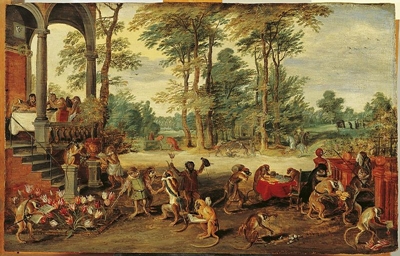
Tulip mania may sound like a term that encompasses a general obsession with these flowers, but it actually means much more. In fact, this expression refers to a time period in the Dutch golden age when prices for tulips spiked to staggering amounts. This was also one of the first major financial bubbles ever recorded. So why were the prices for these blossoms so astronomically high? Here’s some background on this fascinating period in history:
Why tulips were the chosen flower
You may be wondering why tulips of all flowers were the ones at the center of this historical event.
According to Cambridge News, tulips first came over to Europe from Turkey in the late 1500s, and it didn’t take long for people to develop a penchant for them. Tulips didn’t resemble any other blooms that were available at that time, and their exquisite elegance instantly captured everyone’s attention. Something about their vivid hues and unusual bell-like shape had society in awe. Still, Bloomberg Businessweek noted that these flowers were a favorite of Persians long before tulip mania.

”It is impossible to comprehend the tulip mania without understanding just how different tulips were from every other flower known to horticulturists in the 17th century,” British journalist Mike Dash told Bloomberg. ”The colors they exhibited were more intense and more concentrated than those of ordinary plants.”
This flower’s life cycle also played a role. TodayIFoundOut.com explained that the mother bulb only has the ability to produce two to three clones annually. On top of that, a seed takes seven years to grow into a tulip. So supply simply couldn’t meet the skyrocketing demand for these blossoms.
Having tulips in your garden became a status symbol. Wealthy investors, tradesmen and merchants started to quickly begin buying them in bulk, and in turn, their prices continued to steadily rise. The news outlet noted that at the height of Tulip Mania between 1636 and 1637, the cost of certain single bulbs could even amount to more than 10 times the annual income of a skilled craftsman.
Surprisingly, the quality of these flowers was somewhat irrelevant when it came to the tulip craze. TodayIFoundOut.com noted that even low quality bulbs were raking in a fortune. In terms of varieties, the most desired and highest value tulip was the red and white Semper Augustus.

Jan Brueghel the Younger Satire on Tulip Mania via Wikipedia
The peak and fall of tulip mania
So what was the exact moment when this craze hit its highest point? According to TodayIFoundOut.com, it happened when seven orphans auctioned off their father’s inheritance, 70 tulip bulbs, for a record-setting amount. One of the bulbs that the deceased man left his children was the ultra rare Violetten Admirael van Enkhuizen.
What goes up must come down, of course. As with any other financial bubble in history, the crash for the tulip market seemed dramatically sudden. Bloomberg reported that it started in the city of Haarlem when an investor failed to come and pay for the tulips he bought. The incident incited some fear into the country that demand for tulips was falling. It also didn’t help that the majority of tulip trading happened on Main Street as opposed to at the stock exchange among the upper class, or that very little money and few tulips actually changed hands at the peak of the mania. Soon, there were far more sellers than buyers, and eventually, tulips were valued at 1 percent of their worth just weeks prior. In a matter of days, people went from thinking they were striking it rich to being essentially bankrupt.
Today, tulips are surely treasured by people all over. Fortunately for flower enthusiasts, they don’t come with such an exorbitantly high price tag as they once did.
Send a tulip bouquet today!





